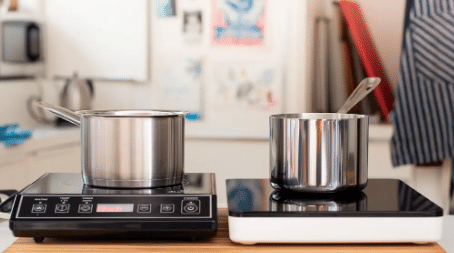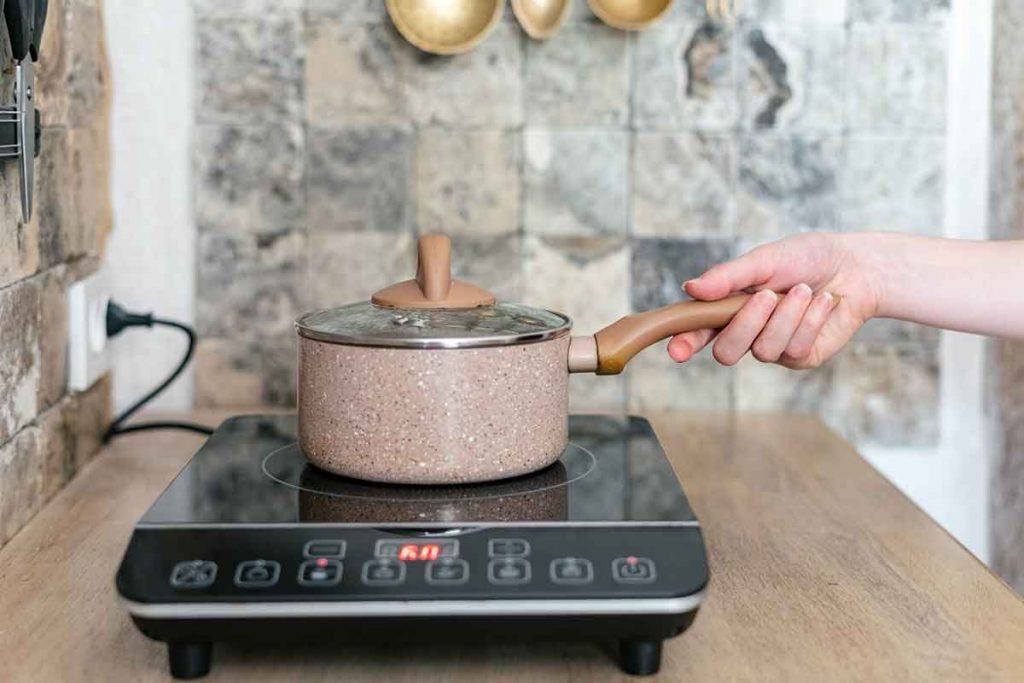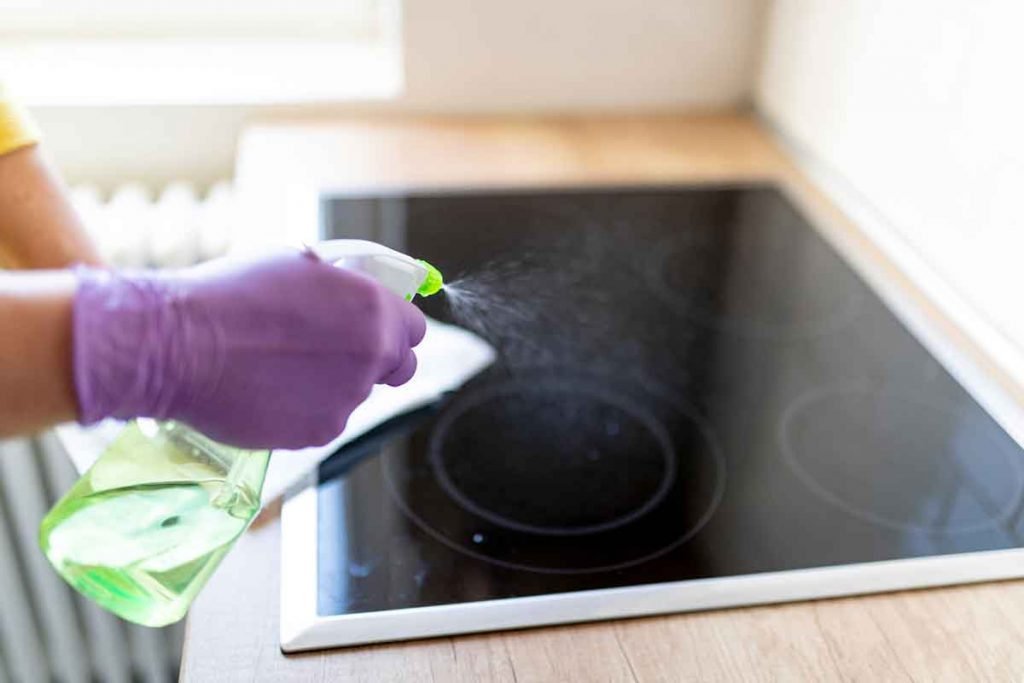Portable induction cooktops have become increasingly popular for their efficiency, safety, and convenience, making them a favorite choice for campers, students, and those with limited kitchen space. While these sleek and compact appliances offer many benefits, many users still wonder; how much weight can a portable induction cooktop hold?
Well, generally, the maximum weight capacity that an induction cooktop carries may depend on the manufacturer or model. However, the typical weight ranges between 10 and 50 pounds or 13 and 23 kilograms.
Understanding the weight limit of a typical portable induction cooktop is crucial to ensure safe and reliable usage. This article goes into detail, exploring the factors that determine how much weight a typical portable induction cooktop can hold, to help you make an informed decision when purchasing one.
What are the Common Weight Capacity Ranges of Portable Induction Hobs?
The weight limit or capacity of most portable induction cooktops typically falls within the range of 10 to 50 pounds (13 to 23 kgs). However, it’s important to remember that some smaller and more compact models designed for light-duty usage may have a weight capacity of as low as 10 pounds (4.5 kilograms). On the other hand, larger and more heavy-duty portable induction cooktops may boast weight capacities of up to 50 pounds (23 kilograms) or even more.
Can You Use Heavy Pots on Glass Cooktops?
Using heavy pots on glass cooktops is generally safe as long as you follow some important guidelines and precautions.
Glass cooktops, also known as ceramic cooktops, are made from a smooth and durable glass-ceramic material that can withstand a reasonable amount of weight and heat. However, they are not as robust as traditional coil or gas cooktops, so you need to be mindful of how you handle heavy pots and pans to prevent damage.
Here are some considerations and tips for using heavy pots on glass cooktops:
- Check the Cooktop’s Weight Capacity – Before using heavy pots, refer to the manufacturer’s manual or specifications to determine the weight capacity of your specific glass cooktop. Most glass cooktops have weight limits that typically range from 40 to 60 pounds (18 to 27 kilograms). It’s crucial to stay within these weight limits to avoid damaging the cooktop.
- Use Flat-Bottomed Cookware – Ensure that the cookware you use on the glass cooktop has a flat and smooth bottom. Flat-bottomed pots and pans provide better contact with the cooktop surface, distributing the weight more evenly and reducing the risk of cracks or damage.
- Lift Pots, Don’t Slide – When moving heavy pots on the glass cooktop, lift them rather than sliding them across the surface. Sliding heavy cookware can scratch or damage the glass surface. Lift the pots gently to reposition them on the cooktop.
- Avoid Dropping Cookware – Avoid dropping heavy pots or banging them on the glass cooktop, as this can cause cracks or fractures. Treat your glass cooktop with care to maintain its longevity.
- Match Cookware Size to Burner Size – Use cookware that matches the size of the burner on which it will be placed. Using cookware that’s very small or one that’s very larger than the burner can lead to noises from the cooktop or uneven heating and potential damage to the cooktop.
- Check for Cookware Warnings – Pay attention to any warnings or recommendations provided by the cookware manufacturer regarding its compatibility with glass cooktops. Some cookware materials, such as cast iron or stoneware, may require special care or be unsuitable for glass cooktops due to their weight or rough bottoms.
- Avoid Dragging Cookware – When you need to move a heavy pot or pan to a different burner, lift it off the cooktop entirely and then reposition it on the burner. Dragging heavy cookware across the glass surface can cause scratches and damage.
- Clean Up Spills – Clean up spills and food debris on the cooktop immediately after cooking. Sugary or acidic spills left on the surface for an extended period can damage the glass if exposed to high heat.
Are there Variations in Weight Limits Among Different Induction Cooktops
Yes, there can be variations in weight limits among different induction cooktop models.
The weight capacity of an induction cooktop depends on various factors, including the size, materials used, design, and intended use. Check the following examples:
Example 1: A portable induction cooktop designed for light-duty use might have a weight limit of around 30 to 50 pounds (13 to 22.7 kilograms), while a built-in, professional-grade induction cooktop could handle 80 to 100 pounds (36.3 to 45.4 kilograms).
Example 2: A standard portable induction cooktop might have a weight limit of around 50 pounds (22.7 kilograms), while a built-in 36-inch induction cooktop could have a weight capacity of 80 to 100 pounds (36.3 to 45.4 kilograms).
Example 3: A premium induction cooktop made with high-quality glass-ceramic and robust internal components may have a weight limit closer to 70 to 80 pounds (31.8 to 36.3 kilograms).
Example 4: An induction cooktop with an advanced cooling mechanism might have a weight capacity on the higher end of the spectrum, around 70 to 80 pounds (31.8 to 36.3 kilograms).
What Factors Can Affect the Weight Capacity of a Portable Induction Cooktop?
The weight capacity of a portable induction cooktop can be influenced by several factors. Understanding these factors is crucial for using your portable induction cooktop efficiently and preventing potential damage.
1. Cooktop Design and Build Quality
The design and build quality of the portable induction cooktop play a significant role in its weight capacity. A well-constructed cooktop with good-quality materials can support heavier cookware. Look for cooktops made from durable materials, such as high-quality glass-ceramic or stainless steel, to ensure better weight limits.
2. Size and Surface Area
Larger cooktops typically have a higher weight capacity compared to smaller ones because they have more space to distribute the weight of the cookware evenly. The cooktop’s surface area should be large enough to accommodate the base of the cookware without exceeding the boundaries of the heating element.
3. Power and Wattage
The power and wattage of the portable induction cooktop can affect its weight capacity. Higher-powered models with greater wattage usually hold more weight. However, power alone should not be the sole determinant of weight capacity; other factors, such as design and materials, also play crucial roles.
4. Cooling Mechanism
Portable induction cooktops have built-in cooling systems to dissipate heat generated during cooking. The efficiency of this cooling mechanism is vital for the cooktop’s performance under heavy loads. An effective cooling system prevents overheating and maintains safe operation with heavier cookware.
5. Manufacturer’s Specifications
Each portable induction cooktop model comes with specific weight capacity guidelines provided by the manufacturer. These guidelines are based on the cooktop’s design, engineering, and testing. Always refer to the manufacturer’s specifications to ensure you stay within the recommended weight limits.
6. Quality of Glass-Ceramic Surface
The quality and thickness of the glass/ceramic surface of the cooktop can impact weight capacity. A thicker and more high-quality surface tends to offer better support for heavy cookware.
7. Intended Use and Durability
Some portable induction cooktops are designed for light-duty use, while others are built for more robust cooking. Heavy-duty models are generally designed to handle heavier cookware and more extended cooking sessions.
Final Thoughts
Understanding the weight capacity of a typical portable induction cooktop is important for safe and effective cooking experiences. The weight capacity of these cooktops can vary depending on several factors, including the design, materials, size, power, and cooling mechanism.
Generally, the weight capacity of a typical portable induction cooktop falls within the range of 30 to 50 pounds (13 to 22.7 kilograms). To ensure safe usage, stay within the manufacturer’s recommended weight limit and use suitable cookware.



